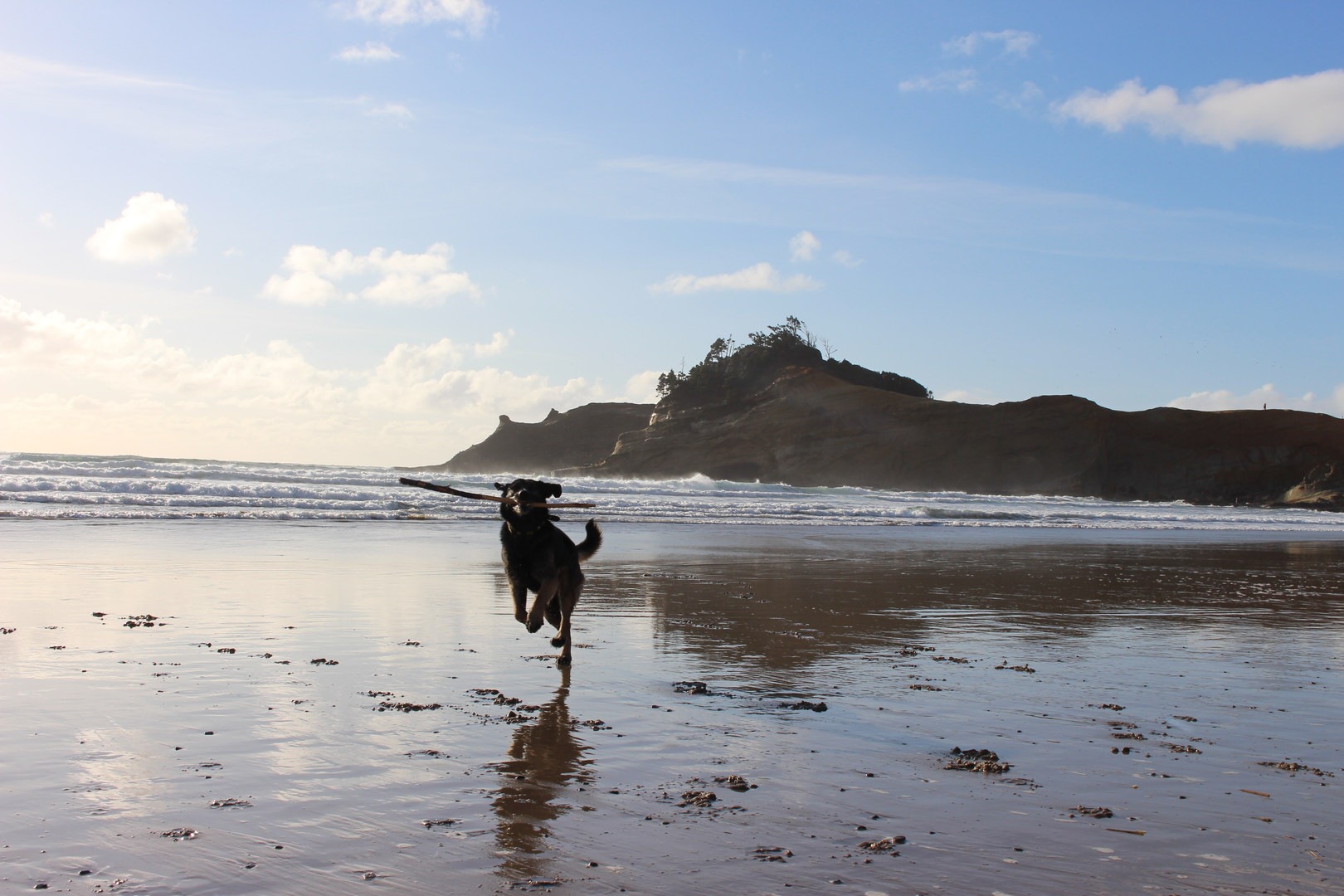You are here
If there’s anything happier (or more adorable) than a sand-encrusted, salty, exhausted beach-going dog, we’re hard-pressed to think of what that is. For us—and you, probably, if you’ve found yourself reading this—a beach day scene replete with a towel, blanket, sunscreen, and a view is simply incomplete without a four-legged friend kicking sand onto our towel. But there’s more to planning a beachy dog adventure than packing up and hitting the road, which you’re probably well aware of as you scan Outdoor Project’s coastal adventures looking for the coveted “Dogs Allowed” icon.
The truth is, there was once over 3,000 miles of dog-friendly coastline in California alone. Now, we enjoy fewer than 50 beaches in the Golden State that allow four-legged plus ones. The perpetrators in this sad story are those who are simply unprepared to enjoy a beach day in a safe, respectful way. But with better education, more cognizant beachgoers, and earnest attempts to do better, we can flip the narrative. It all starts with you and your dog. Leading by example, being gentle with those who are still learning, and offering constructive advice when asked all converge to create a more dog-friendly world.
Below, we’ve compiled our top five pieces of advice to ensure you’re off to a positive start with doggie beach etiquette. There are myriad ways to go above and beyond, and truly, it’s all contingent upon location and circumstance. Even if you’re unable to get a full handle on the five guidelines below right out the gate, diligently practicing the principles of Leave No Trace is an absolute imperative. Applying them to dogs can require careful consideration and attention to nuance, but creating a world in which we can explore with our dogs and lessen our impact on the environment at the same time is the gold standard—one we think everyone should hold themselves to.
1. Read ALL beach rules before arriving
From the East Coast to the West Coast, from the Pacific Northwest to Southern California, beach rules can vary greatly. While some may require a leash at all times, others may be more lenient, but it’s never okay to guess. Though some of the websites may be a bit primitive, there’s almost always a way to search and find a list of rules and regulations that govern each beach. Knowing them well and preparing accordingly can save yourself a huge headache and keep you in good standing with fellow beachgoers and law enforcement—these days, rangers and lifeguards are particularly aware of dog behavior to ensure a positive experience for all.
2. Make sure your dog is highly attentive
The doggy law of the neighborhood is much different from that of the beach. As a good alpha to your dog, you should always be sending clear signals and expressing your exact wishes when a new situation arises regardless of whether that’s in the city or on the sand. Take time and care to ensure your day-to-day mojo translates well to a much less structured situation like a wide open beach with dogs, people, kids, and wildlife. One major must-have: a clear emergency stop signal. We suggest a whistle. And perhaps pepperoni.
3. Don’t disrupt wildlife
The chase instinct in most dogs is nearly overwhelming. When a seagull cruises by or a sea lion wanders up to the shore, it’s imperative that you are able to ensure that your dog doesn’t initiate the chase. If this means keeping her on a leash until more concrete attention skills can be cultivated, that’s the hard truth. Likewise, it’s nearly irresistible for water-loving dogs to keep their paws to themselves when it comes to lazy fish and other near-shore-dwelling sea life. Keep a close eye on the situation to ensure your dog doesn’t take it upon herself to become a fisher.
4. Know your dog
Simple, yet slightly opaque. If your pup isn’t used to the sand and the ocean, acclimating can be a surprising challenge. Most obviously, a dog used to swimming in lakes or ponds won’t have an inherent knowledge of the dynamics of the ocean. Make sure to remain highly attentive if she tends to be an (over)confident swimmer. Doggie life jackets can be a huge help, especially for breeds that aren’t strong swimmers (lookin’ at you, pugs and Frenchies).
5. Be prepared
For anyone, dogs included, running through hot sand all day can be extremely taxing. Always keep a surplus of fresh water and a bowl on hand. Consider how many extra calories she might be burning (beach day zoomies are totally a thing) and pack extra snacks or food accordingly. Last, ensure that you have an extra towel or two to give her a cool (and shady) place to rest her bones when the inevitable exhaustion kicks in. Oh, and poop bags. Pack 'em, USE 'em, and take'em out with you!
Finally, preparedness also comes with an awareness of others around you. It's true: Not everyone likes dogs. Especially when children or older folks are around, make sure your dog keeps her distance and minds her manners to ensure a positive experience for all.





Comments
Sign In and share them.